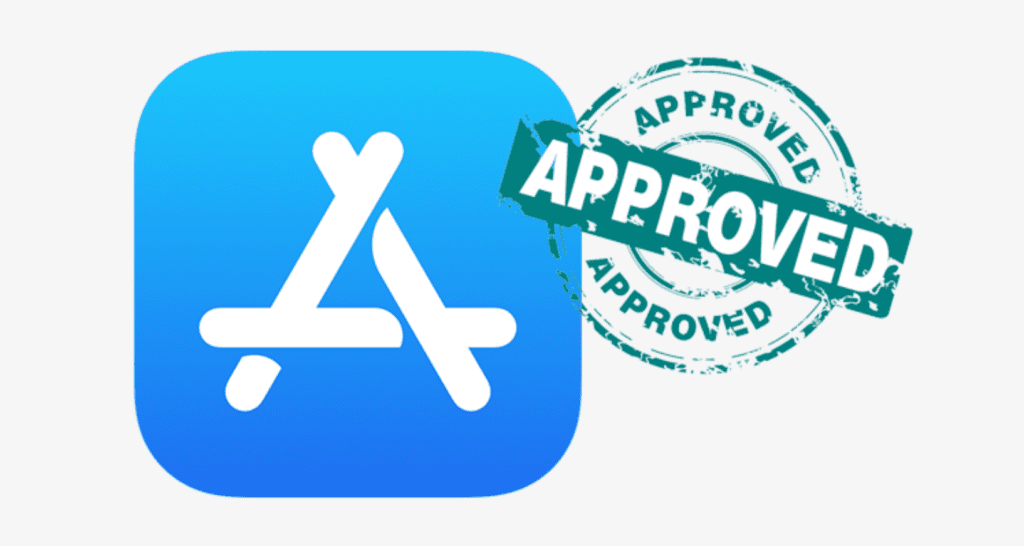The iOS app market is burgeoning with more than 2 million applications. Standing out and ensuring your app gets accepted the first time can be a game-changer.
Table of Contents
Why Apple’s Approval Matters:
Securing Apple’s approval for your app isn’t merely a formality. When your app receives that coveted green light, a world of possibilities opens up. Getting approval is the first obstacle you have to overcome on the road to app discoverability by a vast user base beyond the traditional web search and social media. This isn’t just about standing out; it’s about connecting directly with potential users.
The moment a user notices your app and chooses to download it opens immediate monetization opportunities. These aren’t just downloads; they’re gateways. Each download translates to a user who could be viewing your mobile ads, generating revenue for your business. But it’s not just about making money. The real magic happens when users engage. With every real-time push notification, you’re not just sending out an alert. You’re reaching out with direct user engagement, updating users about new content or offering them exclusive deals, creating a channel for constant and direct interaction.
However, there’s a flip side to this coin. The harsh reality is that app rejection is a looming shadow for many developers. It’s shocking to note that Apple identifies a large part of these rejections to be the result of repeated mistakes. This underscores the importance of meticulousness in the app submission process. The journey to the App Store isn’t just about creation; it’s about perfection.
Achieving Apple’s Seal of Approval:
It’s pivotal to adhere to Apple’s guidelines. For a consistent, favorable impression in the iOS app market, compliance with Apple’s regulations is non-negotiable. We’ve curated comprehensive tips to navigate the labyrinth of Apple’s guidelines, ensuring your app’s smooth sail to the iOS store.

Reasons why an app can get rejected by Apple’s App Store
Apple’s App Store guidelines can be a headache for many app developers. While the potential rewards of getting an app approved are considerable, the pitfalls and hurdles are just as prominent. Broadly speaking, the reasons behind app rejections can be categorized into two main domains: the technical dimensions and the content quality. Understanding these can be the key to ensuring your app sees the light of day on the App Store.
Technical Aspects Leading to App Rejection:
From glitches and bugs to issues with user interface or performance, Apple maintains rigorous standards to ensure the smooth functioning and user-friendly experience of each app on their platform.
- Stability Issues: Apple frowns upon apps with blatant bugs or system malfunctions. Ensure rigorous testing for any performance instability or crash tendencies before submitting.
- Performance Metrics: Beyond aesthetics and entertainment, Apple mandates seamless app operation. Ensure swift page loads and intuitive entry screens to prevent rejection.
- User Privacy Adherence: A stringent privacy policy link is mandatory in both the App Store Connect metadata and within the app. This encompasses a clear data retention strategy and an option for users to retract data collection consent.
- Functional URLs: Broken links are a major red flag for Apple. Periodically audit your mobile app, verifying the functionality of every link.
- Universal Compatibility: Your app must be attuned with the latest Apple devices and systems. Especially with the iPad. Any app draining resources or causing devices to overheat can be grounds for rejection.
- Payment Protocols: Any in-app purchases or digital content downloads must exclusively use Apple’s in-app purchasing system, ensuring secure monetary transactions.
- Essential Functionality: Apps designed merely as contact channels or devoid of significant features risk rejection. Every app feature should be authentic and finalized.
Content Quality Triggers for App Rejection:
Content quality is equally paramount in Apple’s eyes. Apps that mislead users, contain inappropriate content, or infringe on copyrights are flagged. Ensuring your app aligns with Apple’s content guidelines is crucial not only for approval but also for maintaining a positive user experience and reputation.
- Uniqueness: Replicating trending apps can be a misstep. Apple values originality, discouraging submissions of redundant or derivative content.
- Genuine App Experience: If replicating your website, ensure the submission qualifies as an authentic app, not just a web-view. Solutions like MobiLoud can facilitate this transition without risking rejection.
- Finalized Content: Placeholder content is a telltale sign of an unprepared app, potentially spurring deeper scrutiny by reviewers.
- Accurate Descriptions: Misleading app descriptions can jeopardize your submission. Ensure clarity, accuracy, and conciseness.
- Content Value: Apps merely collating random web pages or lacking substantive content might fail to offer users a worthwhile experience.
- User-Friendly Interface: Align your app design with Apple’s Human Interface Guidelines to ensure a user-centric interface.
- User Experience (UX) Excellence: Assess the app’s usability during testing. Deviations from iOS design norms necessitate revisions.
- Platform Exclusivity: Explicit references to non-iOS platforms can hamper approval. Ensure all store screenshots originate from iOS devices.
- Complete Documentation: Update all app-related information, from descriptions to demo videos, ensuring it’s comprehensive and current.
You could come across uncommon reasons for App Rejection, for rejection reasons beyond this guide, directly liaise with Apple. Their support team can elucidate any discrepancies during the review process.
Closing Thoughts:
Apple’s stringent guidelines protect its user base from substandard apps. Investing effort into perfecting your app aligns with this ethos, granting your app an accelerated path to the iOS store.
After successful app publication, leverage these App Store Optimization strategies to augment your app’s visibility and enhance download rates on both iOS and Google Play App Stores.
Receiving a rejection from App Store reviewers can come as a surprise and pose a stumbling block for the entire team. It has the potential to significantly slow down the release or update of an application, causing delays and ruining plans. Experience has shown that rejections can occur even when it seems like you are adhering to store guidelines. What appears to be a straightforward and minor task can, in reality, lead to a lot of hassle, especially when the reason for rejection is unclear.
In such cases, it is suggested to consider that rejection often stems from a simple human mistake, whether from the developer or the store editors. Conversations with representatives from the App Store have revealed that the number of rejections does not impact indexing. Additionally, App Store reviewers are there to assist and explain if the reason for rejection is unclear or if new iterations cannot fix it.
– Valeryia Haurylavets
In our experience, there have been cases where engaging in a dialogue with the store editor helped overcome rejection, rather than engaging in a cycle of uploading new builds and facing repeated rejections.
Best of luck with your applications, and feel free to reach out to us for assistance!

 Receiving a rejection from App Store reviewers can come as a surprise and pose a stumbling block for the entire team. It has the potential to significantly slow down the release or update of an application, causing delays and ruining plans. Experience has shown that rejections can occur even when it seems like you are adhering to store guidelines. What appears to be a straightforward and minor task can, in reality, lead to a lot of hassle, especially when the reason for rejection is unclear.
Receiving a rejection from App Store reviewers can come as a surprise and pose a stumbling block for the entire team. It has the potential to significantly slow down the release or update of an application, causing delays and ruining plans. Experience has shown that rejections can occur even when it seems like you are adhering to store guidelines. What appears to be a straightforward and minor task can, in reality, lead to a lot of hassle, especially when the reason for rejection is unclear.



